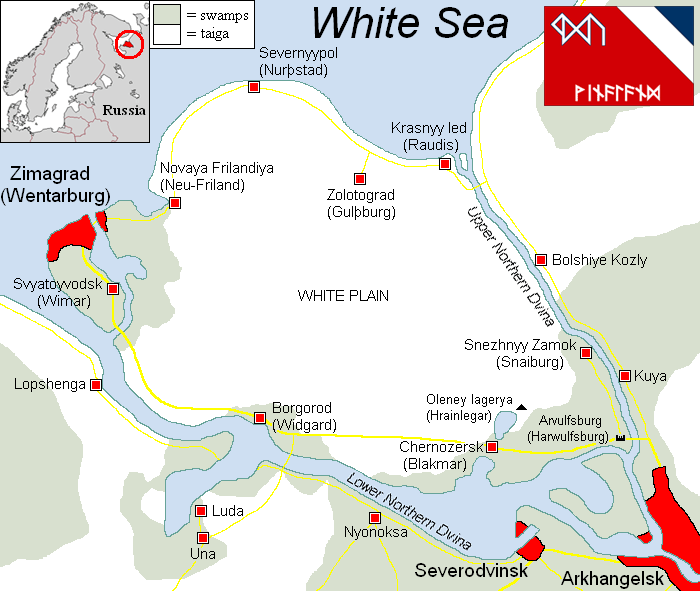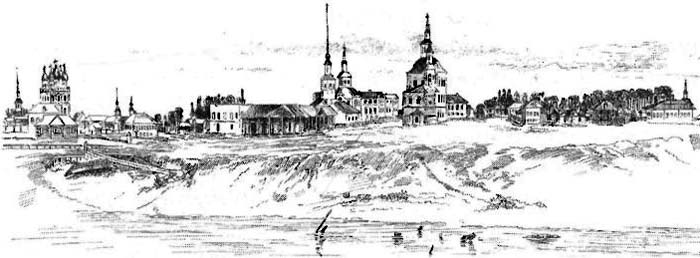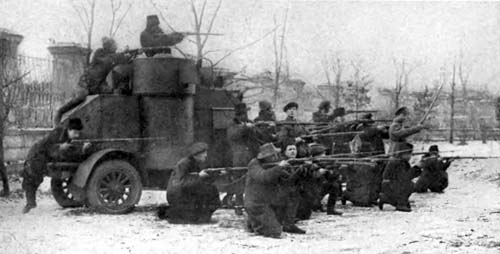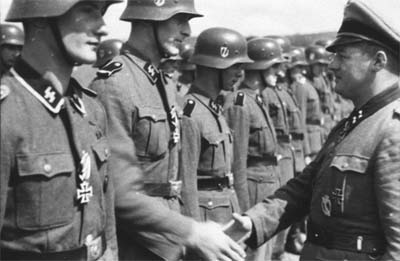  WinalandGeneral information Winaland (officially: Zimagrad Okrug) is an autonomous republic of the Russian Federation. It used to be a trading post of the Frilandic company DWU and a small majority of the population is of Frilandic origin. The area is part of the Arkhangelsk Oblast and is bordered by the White Sea and the Upper and Lower Northern Dvina. The area is about the same size as the Italian island of Sicily, but more sparsely populated and with a much lesser climate. Winaland is not far from the polar circle and it gets over 180 days of snow per year. Its summers are short and cool (± 10° to 15° Celcius / 50° to 59° Fahrenheit), its winters long and cold (± -10° to -15° Celcius / 14° to 5° Fahrenheit). In winter the wind chill factor can drop far below -30° Celcius / -22° Fahrenheit. The area consists of swamps, snow plains and vast coniferous woods (taiga). These are inhabited by animals like the wolf, arctic fox, marten, reindeer and mountain hare. For those who would like to visit the area: you can book a flight to Arkhangelsk and travel northwest from there. Warm clothing is strongly recommended.  Government Winaland is an autonomous republic within the Russian Federation. Its official name is "Zimagrad Okrug", but the majority of the population still uses the historical, Frilandic name. The official languages are Russian and Frilandic and the republic can, to a certain degree, make its own laws. It also has its own parliament, the Waldskapsțing ("Assembly of the Domain"), which is led by a governor. Since the political reforms in 2000 the autonomous republics have lost much of their independence, but most decisions in Winaland are still made by the Waldskapsțing. Besides the regular Russian media, Winaland also has a number of newspapers and television channels in the Frilandic language. Many people also listen to the international Frilandic radio channel Alland Utwerp. The only currency is the Russian ruble. Attempts to introduce the Frilandic skat as an official currency, have been unsuccessful so far. The historic flag of Winaland is the dark red DWU flag with company logo, with in the upper right the Frilandic blue and white and below the name "Winaland" in runic writing. After the liquidation of the DWU it still remained in use for a long time. These days, the historic flag has become controversial; opponents associate it with a company that violated human rights but supporters actually defend the DWU and point out that Winaland would have never even existed without this company. The current flag is blue-white-red, referring to both Frilandic blue-white and Russian white-blue-red. Population Winaland has about 200,000 inhabitants, most of these live in Zimagrad (Wentarburg). A small majority of the population consists of Frilanders (55%), followed by Russians (43%), Ukrainians (1%), Nenets (0,6%) and other ethnic groups (0,4%). During the Soviet period there has been an active Russification policy, in which ethnic Russians were stimulated to settle in the area. This was an attempt to thwart any effort to achieve independence. Because of this, the Frilandic part of the population has become significantly smaller and the Frilandic language and culture have since then also been pushed into the background. It's also customary that people choose an official Russian name that can be used besides their Frilandic name. For example, Ingwar Waldmerssun will russify his name to "Igor Vladimirovich" and the government will also use that name in documents. Language and religion About 55% of the population speaks Frilandic as its first language. 43% Russian and 3% other. The universal language is Russian, which almost everyone can speak. Originally most people in the area spoke Winalandic, a Frilandic dialect that was strongly influenced by Russian. Because of the postwar deportation of a significant part of the population and the following suppression of the Frilandic identity, the dialect became virtually extinct. This ended during the 1980's and children could again be raised in the native language. Although this was usually done in common Frilandic, which is identical to what is spoken in Friland itself. Because this was also taught at schools and used in the media, common Frilandic has completely replaced the remnants of the Winalandic dialect. The most important religions are Ferna Sed (30%), Russian Orthodox (25%), unaffiliated Christian (6%) and other (4%). 35% of the population is atheist. Culture There is a strong contrast between the cultural life of the Frilandic and the Russian population, which is why it's hard to speak of one single Winalandic culture and there are continuous discussions about the question why Winaland is Russian, Frilandic, both or neither. The Frilandic population mainly celebrates the Frilandic holidays and does not take part in Russian holidays, the Russian population does the exact opposite. On other levels the Frilandic and Russian culture have actually become so mingled, that the difference can hardly be made anymore. This identity crisis is also mockingly called "splitgaist oțal" (schizophrenia culture). One of the most well-known Winalandic writers is Stanislaw Dmitrissun, who has a Frilandic mother and a Russian father and writes in a comical way about the culture differences within the family that raised him.
History Earliest history The area was originally inhabited by Finno-Ugric reindeer hunters and from the 9th century onwards it was visited by the Vikings, who called it Bjarmaland. Around the 13th century the area was colonized by the Pomors and became a part of the Novgorod Republic. In 1635 the Frilandic trading company DWU received permission from tsar Michaël I Romanov to build a fortified trading post at the coast, which was named "Wentarburg" (Winter Fortress). In 1640 it also purchased the area southeast of it, which lay between two branches of the Northern Dvina. This was named "Winaland", probably derived from Dvina or Viena, respectively the Russian and Finnish name of the river. This area was mainly interesting because of the fur trade, but wood was also frequently traded. Gold mining Immediately after the purchase of the area, gold veins were discovered on the White Plain, near modern Zolotograd (Gulțburg). The DWU had probably already discovered this earlier and it's believed that this was the true reason for the purchase of what is now Winaland. Gold mines were built and the Pomors, a Slavic people that inhabited the area, were used as forced labourers to bring the gold to the surface. The profits were huge, just like the number of people that lost their life in the mines because of collapses, frostbite and hunger. In Friland little was known about the DWU crimes in far-off Winaland, and because the economy also shared in the benefits of gold mining, nobody asked any questions.
Penal colony In 1680 DWU governor Ațalwulf Haimrikssun reported that he "had run out of Pomors". To solve this, the DWU asked the Frilandic government to supply prisoners, so that these could be used as "employees" in the gold mines. Not a word was mentioned about the exterminated Pomors and the horrible working conditions in the Winalandic mines. The government saw a great opportunity to get rid of all the scum and decided to cooperate with the plan. Whole shiploads of prisoners were delivered at the port of Wentarburg, which had by that time grown into a large settlement. Once arrived, the prisoners were immediately sent off to the mines. Those who survived the long journey through snow and ice and were still alive after one year of labour, could be selected for the Waldskapshar ("Domain Army"), the brutal, colonial troops of the DWU. They were each "presented" with a female prisoner and were allowed to populate the new settlements as full Winalandic citizens. The end result was a rugged population, which was as rock-hard, ice-cold and merciless as the climate in which it lived. The Frilanders therefore call their descendants in Winaland "the most dangerous that Frilandic blood has ever produced." Russian annexation Russia desired a bigger part of the profit of the Winalandic gold mines and tried to gain more influence on the area. In 1718 tsar Peter the Great even ordered five hundred Russian soldiers to march into the area "to protect the friendly territory of Winaland against Swedish agression". At Blakmar (Chernozersk) the little army was promptly attacked by the Waldskapshar, which made quick work of it. Tsar Peter was furious, but because he was too occupied with the Great Northern War, the conquest of Winaland had little priority. Because of this, the area managed to remain semi-independent. In 1788 tsarina Catherine the Great made new preparations to annex Winaland, but abandoned these when the Russo-Swedish War broke out. However, by threatening to strip the DWU of certain trade advantages, she did manage to force Winaland to hand over a bigger part of its profits to the Russian Empire as "protection money." In 1800 the DWU went bankrupt and Friland refused to take over its colonies, leaving Winaland to fend for itself. The economy totally collapsed and the Waldskapshar was disbanded. Governor Kunrad Harmanssun realized his country's weakness and quickly sought protection from powerful countries, to prevent Russian annexation. It was to no avail: in that same year tiny Winaland was overrun by the Russian army and the area became part of the Russian Empire.
Revolution After the annexation of Winaland the area remained relatively independent for over a century. As long as enough gold kept flowing to the Russian treasury, the tsar didn't interfere with anything. For the people it also made little difference which hand was holding the whip. In 1917 the empire was ended by the Russian Revolution and civil war broke out. The Winalanders rose to the occasion and declared themselves independent. The civil war developed in favour of the Bolsheviks, who conquered Arkhangelsk on February 20, 1920. Now that the Red Army was at the gates of Winaland, governor Stainar Hludwigssun decided to negotiate with the Bolsheviks about a treaty of friendship and an official recognition of Winalandic independence. Instead, he was imprisoned and later hung. The Winalandic War On February 23, 1920 the Red Army started its attack on Winaland. The resurrected Waldskapshar was no match for the Bolshevist supremacy, but it still offered fierce resistance at the fortress of Harwulfsburg and managed to hold out for over two weeks there. On March 9 the fortress fell to the Red Army. Two hundred Waldskapshar captives where afterwards shoved under the ice of the Northern Dvina alive. The villages of Snaiburg (Snezhnyy Zamok) and Blakmar (Chernozersk) were looted. Hrainlegar (Oleney lagerya) resisted and was therefore completely exterminated and destroyed. After the Hrainlegar massacre the Bolsheviks moved westwards. On March 14 Widgard (Borgorod) surrendered without a struggle and was therefore spared. Meanwhile, the Waldskapshar had entrenched itself at the strategically important bridge over the side branch of the Dvina, south of Wimar (Svyatoyvodsk). This was the last obstacle between the Red Army and Wentarburg (Zimagrad), the Winalandic capital. Here heavy fighting broke out on March 17, which resulted in many casualties. The Waldskapshar refused to retreat, because the fall of Wentarburg would mean the end of Winaland. It took until March 26 before the defences collapsed and the Waldskapshar was destroyed to the last man. Wimar was burned to the ground and the part of the population that hadn't fled yet, was shot and dumped into a mass grave. Hereafter the Red Army advanced on Wentarburg, its next target. The Winalandic parliament decided not to wait for this and on April 9 it signed an unconditional surrender, to spare the city and its people. With this, Winaland became part of Russia once again.
World War II When Germany invaded the Soviet Union in June 1941, many Winalanders saw this as a chance to regain their freedom. With the Red Army massacres still in mind, the Germans were regarded as the lesser of two evils. Although governor Wulfgar Aigilssun pretended to be pro-Russian, he had secret contacts with both Germany and the Frilandic nazi party ȚMA. In December 1941 the Germans approached Lake Ladoga and the Finns were in Karelia and near Lake Onega. For Winaland this was the moment to go into action. In the night of December 18 to 19, 1941 several hundreds of Winalanders passed the front line unseen to volunteer for the Germans. They were assigned to the 5th Division of the Waffen-SS, together with other volunteers from the Low Countries, Scandinavia and the Baltic States. In Winaland itself secret preparations were made for a planned uprising against the Soviets. This was done in deliberation with the nazi's and German U-boats delivered the necessary weapons for it. However, before the plan could be executed, it was discovered by Russian spies. Winaland was quickly occupied by units of the Red Army, which retaliated with huge devastations and then went berserk on the citizens of Wentarburg, in which hundreds of people lost their lives. Hereafter Stalin ordered a large part of the Winalandic population to be deported to the gulags. Russification After the war not much was left of Winaland: nearly every town was badly damaged and especially Wentarburg was largely in ruins. Three quarters of the inhabitants had perished or was deported. In the early 50's a part of these returned alive from the gulags, but the thriving city that Wentarburg once was, had ceased to exist. To erase every memory of Winaland, Stalin ordered to substitute all place-names with Russian translations and the Frilandic language and culture were largely suppressed. In the 60's shipyards for the production of navy vessels and submarines were built in Zimagrad, former Wentarburg. Because of this, the Winalandic economy and employment could recover. The ruined parts of Zimagrad were rebuilt in the characteristic Soviet architecture and the government stimulated ethnic Russians to settle in Winaland. This resulted in not just more manpower for the shipyards, but it also made the area more Russian. For the Winalanders were still distrusted because of their role during the war. Autonomous republic The collapse of the Soviet Union gave Winaland room for more autonomy. Although the majority of the people supported full independence, the Russian government did not allow this. However, Winaland did become an autonomous republic on June 4, 1992.  Settlements:
Settlements:Zimagrad (Зимаград, "Winter fortress" / Frilandic: Wentarburg) This has been the capital of Winaland since the day it was founded. Over 80% of the population lives here, the rest of Winaland is sparsely populated. Zimagrad is known for its port and shipyards. The most famous spot is the Sun Lane (Russian: Solnechnym Prospekt / Frilandic: Sowilgat), a luxurious shopping street where it's, despite its name, usually freezing cold. Chernozersk (Чернозерск, "Black Lake" / Frilandic: Blakmar) This town lies in a swamp, in which only the residents know the way. Visitors are advised to keep to the beaten track. Svyatoyvodsk (Святойводск, "Sanctuary at the water" / Frilandic: Wimar) There used to be a temple here, next to a small lake. Later this place developed into a fishing town. Severnyypol (Северныйпол, "Northern city" / Frilandic: Nurțstad) Known for its lighthouse and luxurious fish restaurant, where the fish is so fresh, that guests often need to beat their meal to death first, before they can eat it. Borgorod (Боргород, "Wood city" / Frilandic: Widgard) A welcome stop-over on the motorway from Arkhangelsk to Zimagrad. Especially known for its rugged strip club "Ța Lihtrauda Muskul" ("The Pink Mussel"), where Winalandic girls provide pole dances and other "services" to drunk Russian truck drivers. Krasnyy led (Красный лед, "Red ice" / Frilandic: Raudis) In 1720 a new gold mine was dug here by a group of two hundred prisoners. When they complained about the lack of food, the DWU supervisor ordered thirty prisoners to be beaten to death and eaten by the others. According to the legends, the ice turned blood red after this, in protest against this crime. Snezhnyy Zamok (Снежный Замок, "Snow fortress" / Frilandic: Snaiburg) Here used to be a stronghold, that got snowed in so often that the inhabitants were sometimes trapped for days. Zolotograd (Золотоград, "Gold fortress" / Frilandic: Gulțburg) The coldest and most remote town of Winaland. Most of the gold mines are located here and the town itself started as a camp for the forced labourers that worked there. Novaya Frilandiya (Новая Фриландия, "New Friland" / Frilandic: Neu-Friland) The village with the biggest drinking problem in all of Winaland. Almost every month a frozen drunkard is found, who has often frozen so solid, that he first needs to be chipped off the street. Other locations: Arvulfsburg (Арвулфсбург, "Harwulf's fortress" / Frilandic: Harwulfsburg) This fortress was built in 1734 and named after the then Frilanic king Harwulf (1733 - 1768). During the Winalandic War (1920) there has been heavy fighting here between the Waldskapshar and the Red Army. These days it's a museum. Oleney lagerya (Оленей лагеря, "Reindeer camp" / Frilandic: Hrainlegar) The ruins of the town of Hrainlegar, where the Red Army caused a massacre during the Winalandic War. Since 1980 a memorial is held here every year, in which far right protesters hold anti-Russian speeches while counter-protesters are calling for reconciliation. Belaya Ravnina (Белая Равнина, "White Plain" / Frilandic: Hwita Sliht) This rugged terrain covers more than three quarters of Winaland. It consists of snow plains and coniferous woods (taiga) and is one of the most beautiful, but also most dangerous places of interest in Winaland. Tourists are advised to only visit this area with an experienced guide. Beloye More (Белое Море, "White Sea" / Frilandic: Hwita Sai) (sea) Verkhnyaya Severnaya Dvina (Верхняя Северная Двина, "Upper Northern Dvina" / Frilandic: Ubarwina) (river) Nizhniy Severnaya Dvina (Нижний Северная Двина, "Lower Northern Dvina" / Frilandic: Nițarwina) (river)  |



